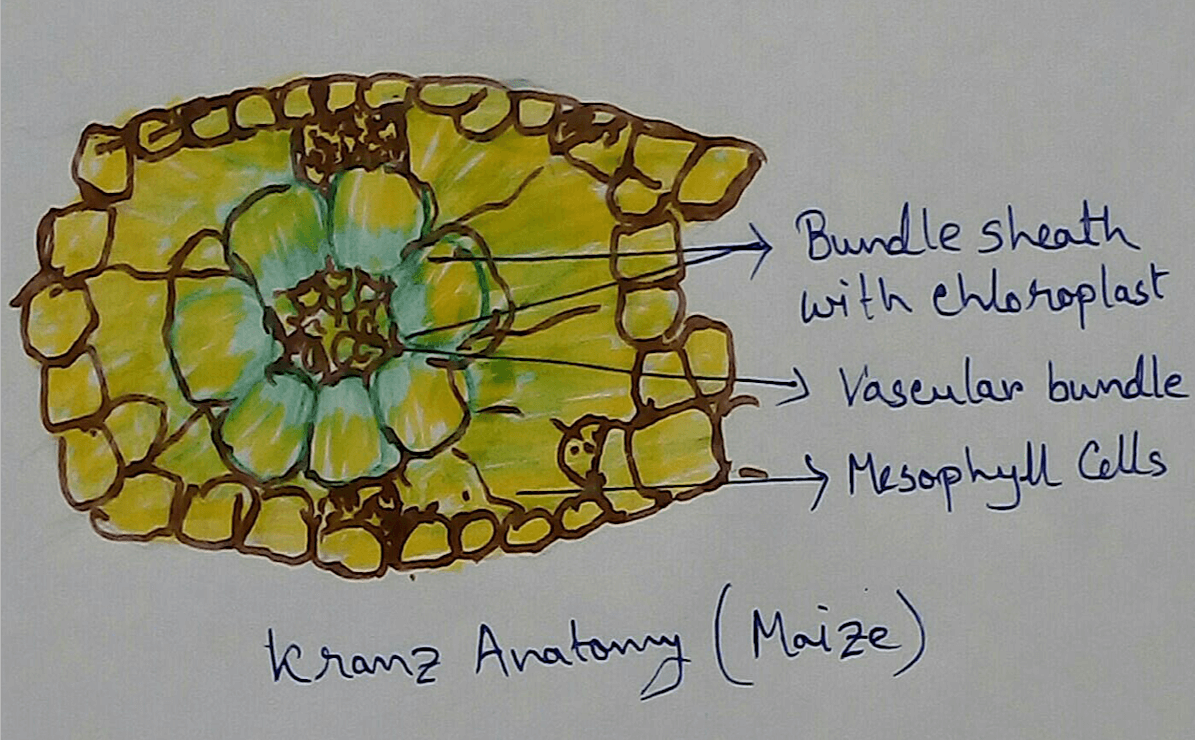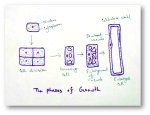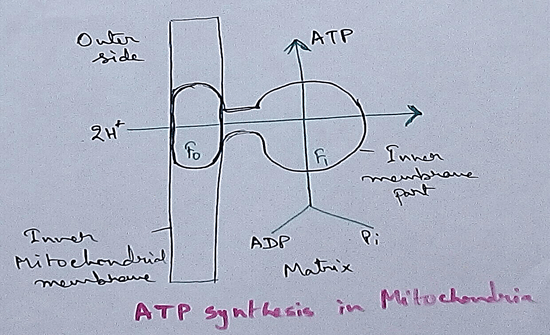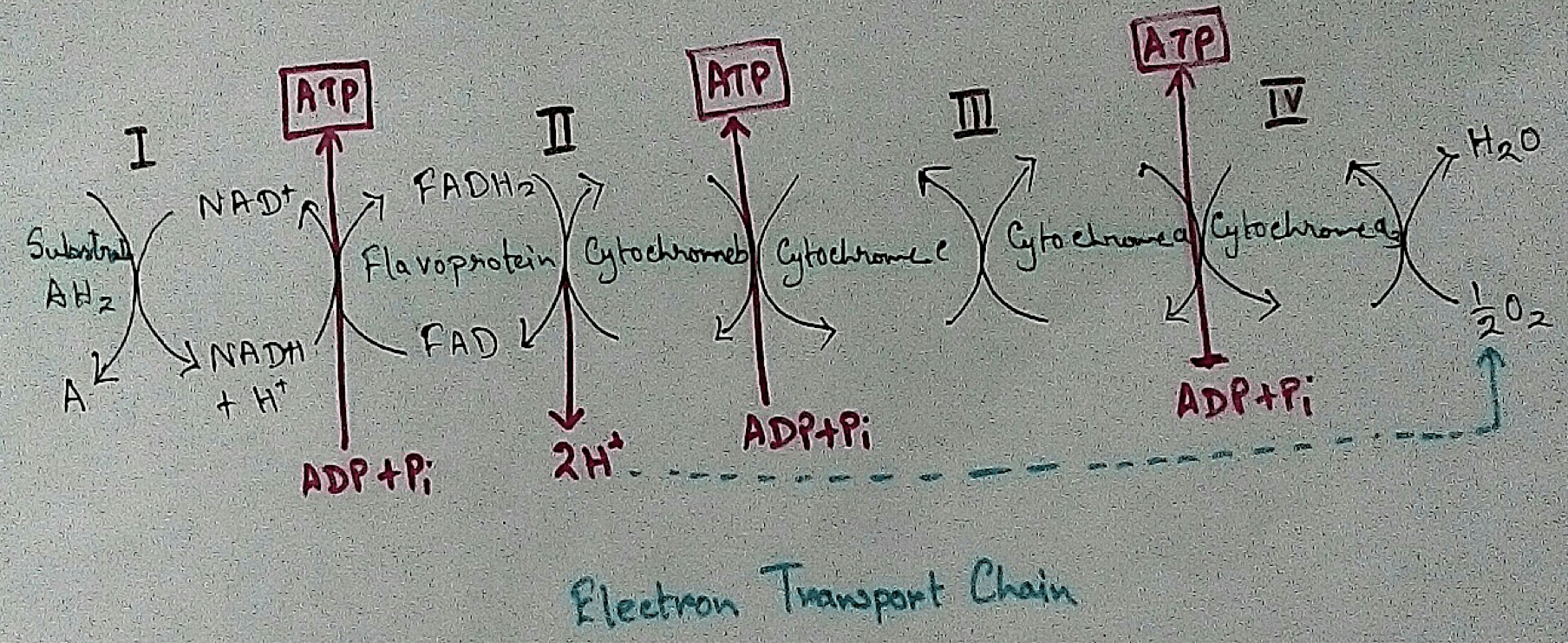The C4 Pathway
Definition of C4 Plants – C4 plants are those plants where carbon dioxide are circulated into four carbon compound (sugar) before entering the Calvin cycle. There are many C4 plants that we take in our diet ,they are – maize, pineapple, sugarcane etc.
Location where this Plants are Found - This occurs in some tropical plants where Kranz anatomy is found. Examples of this type of plants are- Maize, Sugarcane, Atriplex, Amaranthus etc.
Kranz Anatomy - The term Kranz means ring or wreath in German. Thus Kranz anatomy is a special type of structure found in the structure of the C4 plants concentric undifferentiated mesophyll tissues are arranged around the vascular bundles with chloroplasts containing bundle sheath.
Structure of their Chloroplasts - In this plants concentric undifferentiated mesophyll cells are found that is arranged around the vascular bundles that are associated with the chloroplasts containing bundles sheath. Chloroplasts of bundle sheath are larger, agranalar. This chloroplasts are lack of photosystem 2 activity. Mesophyll cells fix carbon dioxide with the help of phosphoenolpyruvate which are the first acceptor of the carbon in the presence of phosphoenol pyruvate Carboxylase (pepco). This is the first unstable compound called oxaloacetic acid and it is then converted into malic acid or aspartic acid for the transport to bundle sheath cells. In bundle sheath cells, carbon dioxide is released and is assimilated through Calvin cycle. As a result pyruvic acid is released as pyruvate which passes back into the mesophyll cells where phosphorus enol pyruvate is generated.
Comparison between the C3 and C4 Plants - For the synthesis of the one molecule of glucose by photosynthesis required 18 molecules of ATP and 12 molecules of NADP . While on the C4 plants need additional 12 molecules of ATP. These plants are more efficient of uptake of carbon dioxide from the environment than the C3 plants. C4 plants can tolerate drought, adverse environmental condition than the other plants. Their resistance power is high as they have little photorespiration, and they are also resist to the fullest summer sunlight and not affect by the temperature of summer. C4 plants have the compensation point of the carbon dioxide in between 0 to 10 ppm (perse per million). On the other hand C3 plants have the compensation point of carbon dioxide in between 10 to 100 ppm. C4 plants have the rate of photosynthesis by 40 to 90 mg CO2/dm2/hr. Whereas the in C3 plants have the rate of photosynthesis in the range between 15 to 35 CO2/dm2/hr .
Importance of C4 Pathway -
Plants those are having C4 pathway and tends to have efficiency while tolerating the very adverse weather and uptake more carbon dioxide.
What do you mean by CAM Plants?
This type of plants have the similar photosynthetic pathway like C4 plants. Stomata of this plants remain open during night when CO2 is taken from outside and then fixed as malic acid by the help of phosphoenol pyruvate. Here Calvin cycles takes place when the stomata are closed during the day time.
From The C4 Pathway to HOME PAGE
Recent Articles
-
Explain about Growth in Plants |Definition of Growth & Differentiation
Feb 27, 25 02:07 PM
Growth is a permanent increase in length or volume of an organism that brought upon by an increase in its dimensions due to synthesis of new protoplasmic material. -
Definition of Respiratory Quotient | calculation | Application | Plant
Dec 02, 24 12:09 AM
Definition of respiration quotient- the ratio of the carbon-dioxide evolved to that of the oxygen consumed by a cell, tissue, plants or animals in a given time is called respiratory quotient. It is us… -
Amphibolic Pathway | Definition | Examples | Pentose Phosphate Pathway
Jun 06, 24 10:40 AM
Definition of amphibolic pathway- Amphibolic pathway is a biochemical pathway where anabolism and catabolism are both combined together. Examples of amphibolic pathway- there are different biochemical… -
Respiratory Balance Sheet | TCA Cycle | ATP Consumption Process
Feb 18, 24 01:56 PM
The major component that produced during the photosynthesis is Glucose which is further metabolised by the different metabolic pathways like glycolysis, Krebs cycle, TCA cycle and produces energy whic… -
Electron Transport System and Oxidative Phosphorylation | ETC |Diagram
Feb 04, 24 01:57 PM
It is also called ETC. Electron transfer means the process where one electron relocates from one atom to the other atom. Definition of electron transport chain - The biological process where a chains…





New! Comments
Have your say about what you just read! Leave me a comment in the box below.